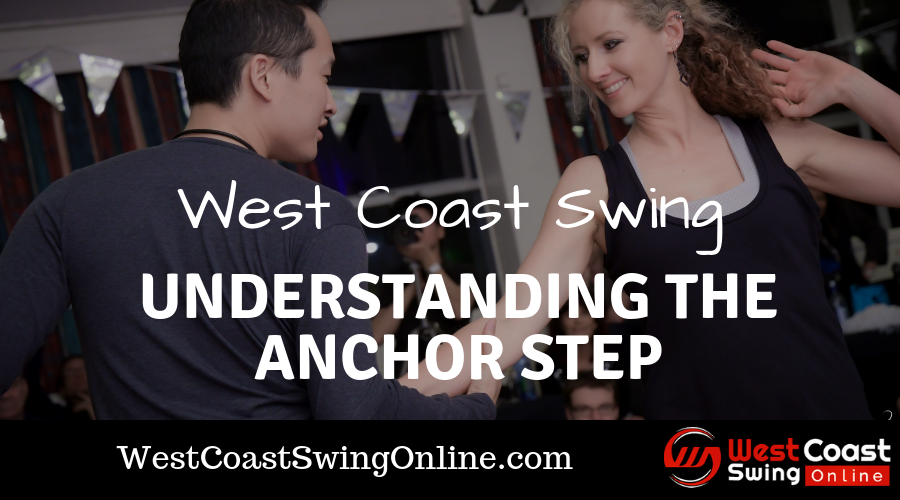If you’re new to the dance you might be wondering, what is the anchor step in west coast swing. The anchor is the heart of west coast swing and creates the unique look of the dance. It creates connection and allows for lots of easy styling opportunities.
What is the anchor step in west coast swing?
The basic anchor step that is taught to beginners occurs on the last two beats of the pattern (5&6 for 6-count patterns; 7&8 for 8-count patterns).
Going into a basic anchor, the leader’s weight is on the left foot, while the follower is on the right.
The basic anchor itself is a triple step performed in third foot position—the instep of the rear foot is aligned with the heel of the forward foot.
For the leader, the right foot is slightly behind the left; the follower’s left foot is slightly behind the right.
At the end of the basic anchor, the leader’s weight is on the right heel and the follower’s weight is on the left heel.
Because the weight is on the back heel, the partners are stretched away from each other, with their centers settled back.
Many anchor variations are permissible; it is ok to anchor with different rhythms, different foot positions, and even different lengths of time. It is even possible to move, or “float,” the anchor across the floor.
What cannot change, however, is that the partners eventually settle their weight away from each other.
The settling back of an anchor creates the momentum for the next pattern. At higher levels, the degree of stretch in the anchor can indicate a delay or speed change in the dance. The anchor is also an indication to the partner that the play within a pattern is over and that the partners are ready to resume the dance.
Want to add some style to your anchor step?
Take Action>> Download 5 ways to style your anchor step




 Brian & Megan
Brian & Megan